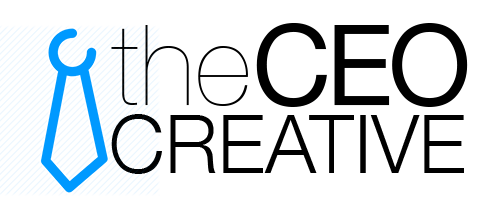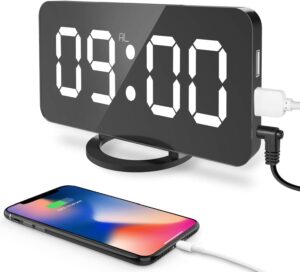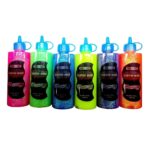Introduction
In today’s rapidly changing market, having a variety of product designs has become a key element in attracting contemporary customers. The old idea of a single product fitting everyone is long gone. Today’s consumers are well-informed and look for products that represent a wide range of experiences, cultures, and viewpoints. When businesses incorporate diversity into their product designs, they promote inclusivity, making their brands not only attractive but also easy to connect with. This strategy allows them to connect more deeply with a broader customer base, ultimately boosting consumer interest and loyalty.
The Importance of Diversity in Product Design

In this day and age, which is moving faster than ever, diversity is not just a popular term, it’s a vital component of business plans, particularly when it comes to product design. Designing products that cater to a broad spectrum of consumers does two things: it boosts market reach and it resonates with what today’s shoppers care about. Let’s delve into how embracing diversity in product design really connects with contemporary consumers and why it’s such a vital aspect for any brand aiming for success.
Understanding Diverse Consumer Needs
Today’s shoppers are on the hunt for products that really click with their unique needs, likes, and who they are. That means businesses have to ditch the idea of a single product for everyone. By getting to know the wide range of what consumers want, companies can make products that really hit the mark for their customers, both practically and emotionally.
– Showing Different Cultures: Products that feature elements from different cultures make people feel noticed and valued. It could be through designs, materials, or features that tie into specific cultural traditions – recognizing cultural diversity can really make someone feel special.
– Welcoming Everyone, Regardless of Gender: The old days of products being labeled strictly for men or women are over. Now, people embrace a whole range of identities, and they want the products they buy to reflect that openness. Offering products designed for everyone, regardless of gender, or even specifically for non-binary individuals, can reach a wider, more accepting group of customers.
– Accessibility Features: A contemporary design that considers the requirements of individuals with disabilities—such as packaging that’s simple to open or devices operated by voice commands—enhances a product’s universal appeal. Accessibility isn’t merely an extra feature; it’s a fundamental part of inclusive design.
Comprehensively grasping and addressing these needs allows product design to become more varied and embracing, making customers feel appreciated and comprehended.
Enhancing Market Reach Through Inclusivity
When brands make their products with diversity in mind, they naturally find they can sell to more people. By being inclusive, companies can connect with a wider range of customers, going beyond limits based on location or background.
– Global Reach: In today’s connected world, the global market is easier to access than ever before. If a product’s design is made to appeal to many different kinds of people, it can find success in markets all over the planet. Products made with everyone in mind can bring in customers from other countries, creating new ways for businesses to make money.
– Attracting Younger Shoppers: Younger buyers, especially those in Gen Z and Millennials, like to spend their money on brands that support diversity and inclusion. They care about social issues and prefer to buy from businesses that share their beliefs. When brands create products that are inclusive, they can gain the loyalty and business of these important groups of shoppers.
Inclusivity in product design is more than a trend—it’s a strategic advantage. By broadening their appeal, brands can expand their reach and maximize their impact in the marketplace.
Building Brand Loyalty with Diverse Products
Incorporating diversity into product design goes beyond simply catching the eye; it’s a route to establishing brand loyalty. Consumers naturally gravitate towards a brand that regularly weaves diverse and inclusive elements into its designs.
– Making a Personal Connection: When products resonate with someone’s identity, culture, or way of life, they forge an emotional link. This connection nurtures loyalty, as customers view the brand as attentive and mindful of their needs.
– Building Trust: A consistent track record of diverse product designs can strengthen the trust between consumers and the brand. When people see a brand’s dedication to inclusivity through its product range, they’re more inclined to keep coming back and to suggest the products to others.
Community Building: When companies really embrace diversity, they can bring together groups of customers who have common values. These customers often turn into passionate supporters of the brand, telling their friends and social networks about the products, which makes them more loyal customers in the long run.
Brands that weave diversity into how they design products are doing more than just making things people want to buy—they’re forging strong, lasting connections with their customers.
Strategies for Implementing Diversity in Product Design

Understanding that diversity matters is just the beginning; actually building it into product design is a whole different challenge. Let’s explore some real-world tactics companies can use to make sure their products truly reflect diversity and inclusivity.
Conducting Comprehensive Market Research
Getting a good grasp on the market is one of the first things a company needs to do if it wants to make its product design more diverse. Doing lots of research helps businesses figure out what different groups of customers really want and like.
– Surveys for Different Groups: If a company does surveys that are aimed at certain types of people, they can get some really useful information about what those groups are looking for in product designs. This way, brands can make their products fit what people want better.
– Keeping Tabs on Customer Feedback: Setting up ways to constantly get feedback from customers lets companies keep improving their products over time. Paying attention to what customers say can give direction and show new ways to make products more inclusive.
– Learning from the Competition: Watching what competitors are doing well (and not so well) when it comes to diversity can be a great way to learn. Seeing how a company measures up to the best in the industry can spark new ideas and help them avoid mistakes others have made.
When a brand does its research well, it can build a strong base for making products that appeal to more people.
Collaborating with Diverse Teams
Different design teams are important for creating products that are inclusive. When people from different backgrounds work together, they bring many different ideas and points of view.
– Hiring People from Different Backgrounds: Hiring from a wide range of people ensures that the team is diverse. This diversity helps the creative process and allows different viewpoints to thrive.
– Working Together Across Departments: Encouraging people from different departments—like marketing, design, and research—to work together not only boosts creativity but also brings different voices into the conversation. This comprehensive approach ensures that the product design is inclusive from the beginning to the end.
– Encouraging Open Conversations: Creating a culture where team members feel comfortable sharing their unique ideas can lead to innovative thoughts. Open conversations allow for the exploration of concepts that might otherwise be missed.
Having a team with a variety of backgrounds is really helpful when creating designs that will attract a wide range of customers. This way, the products end up being a better representation of the world as it is today.
Incorporating Inclusive Design Principles
Inclusive design isn’t about creating special exceptions for a few; it’s about crafting products that everyone can use and appreciate. By adopting inclusive design principles from the get-go, brands can reach a broader audience.
– Universal Usability: Products should be easy to use and accessible to everyone, regardless of their abilities. This means thinking about things like using high-contrast colors for people with visual impairments or making tech products intuitive to use.
– Adaptability: Designing products that can be adjusted or used in different ways allows for greater flexibility in how consumers interact with them. Designs that are adaptable can meet a wide range of needs and preferences.
– Ergonomic Considerations: A key part of inclusive design is making products that are comfortable and practical for everyone. Taking into account different body types, ages, and abilities during the design process can lead to products that are more inclusive and user-friendly.
By weaving these ideas right into how they design things, companies can make sure their products feel right at home and work well for loads of different people.
Basically, when companies really take on board the idea of diversity in how they design products, it means they get what a whole mix of people need today and they use clever methods to make sure those needs are met. For these companies, it’s not just about being more popular, but also about creating a crowd of customers who really care about including everyone and celebrating differences. In a world where everyone’s talking more and more about being inclusive, the companies that put diversity at the heart of how they design their products aren’t just getting by – they’re actually doing brilliantly.
Challenges and Solutions in Achieving Diversity

Crafting products that resonate with a broad spectrum of customers is quite a challenge. It demands addressing the diverse needs, tastes, and experiences of today’s consumers. Let’s explore some of the hurdles businesses encounter and how they can navigate them to develop a successful diversity strategy in product design.
Overcoming Internal Biases
Biases we might not even realize we have can really get in the way of creating a diverse environment. These biases, whether we know about them or not, can seep into how we create things, affecting the choices we make and the results we get.
– Knowing is Half the Battle: The first step to tackle bias is simply being aware of it. Companies that really want to be diverse start by teaching their staff about biases and fostering a culture of acceptance through ongoing workshops and training.
– Mixing Things Up: Putting together a team of designers and decision-makers from all walks of life can help keep biases in check. When a variety of viewpoints are represented, products are more likely to meet the needs of a wider array of customers.
– Letting Everyone Shine: Encourage brainstorming sessions where everyone feels comfortable speaking up. Creating an atmosphere where team members feel free to share their one-of-a-kind ideas can lead to groundbreaking solutions that appeal to a larger audience.
When companies take a proactive approach to addressing biases, they can create products that genuinely connect with the wide range of consumers we see today. This not only builds stronger brand loyalty but also promotes a more inclusive environment.
Managing Diverse Consumer Feedback
Once a product is out in the market, feedback plays a pivotal role. It’s no easy task to juggle the array of opinions from a varied customer base, but it’s absolutely vital for fine-tuning products and making sure they live up to everyone’s expectations.
– Strong Feedback Channels: Setting up solid systems to collect and parse feedback is crucial. Make sure to use various avenues like surveys, social media platforms, and focused discussion groups to gather a broad spectrum of customer viewpoints and experiences.
– Organize the Feedback: To really understand what the feedback means, sort it out based on factors like demographics, cultural contexts, and individual tastes. This kind of categorization helps companies see what parts of the product click with certain groups and what needs work.
– Constant Refinement: Put the feedback to work in a反复 design process. Constantly tweaking the product based on real consumer feedback helps create designs that cater to the diverse needs of all users, resulting in greater product satisfaction and stronger brand loyalty.
Effectively handling diverse consumer feedback can turn critiques into opportunities, reinforcing product appeal across a spectrum of customers.
Ensuring Cost-Effectiveness
Although diverse product design offers numerous advantages, expenses can escalate rapidly without proper management. It’s essential to strike a balance between diversity and cost-effectiveness for successful, ongoing product innovation.
– Strategic Resource Allocation: Distribute resources thoughtfully. Concentrate on areas where efforts will significantly boost diversity, making sure investments yield substantial results in customer inclusion and contentment.
– Design Flexibility: Develop adaptable and scalable designs. This versatility enables products to be altered easily for various markets, diminishing the need for expensive complete overhauls. Employing modular design can also address a variety of needs without increasing manufacturing costs.
– Prioritize and Pilot: Give precedence to features that enhance inclusivity and test them on a limited scale before full-scale manufacturing. This method helps manage expenses by early identification of successful features and prevention of large, unnecessary expenditures.
Making sure products are diverse while also being affordable helps companies create items that appeal to everyone, without making the company unstable financially.
In short: Creating products that are diverse means dealing with biases, listening to feedback from different customers, and controlling costs. By using smart approaches, companies can make products that show the many different types of people in the world today, making everyone feel included. When businesses keep listening and learning, they can use diversity to connect better with their customers.
Conclusion
In the rapidly changing market we see today, incorporating a variety of perspectives in product design isn’t just a good idea; it’s essential. When businesses develop products that cater to the distinct requirements and tastes of different consumer segments, they not only expand their reach but also cultivate a sense of welcome and acceptance. This strategy answers the moral imperative for representation, while also striking a chord with contemporary consumers on a more genuine level. Therefore, let’s champion variety and create products that genuinely mirror the vibrant diversity of our global community!









